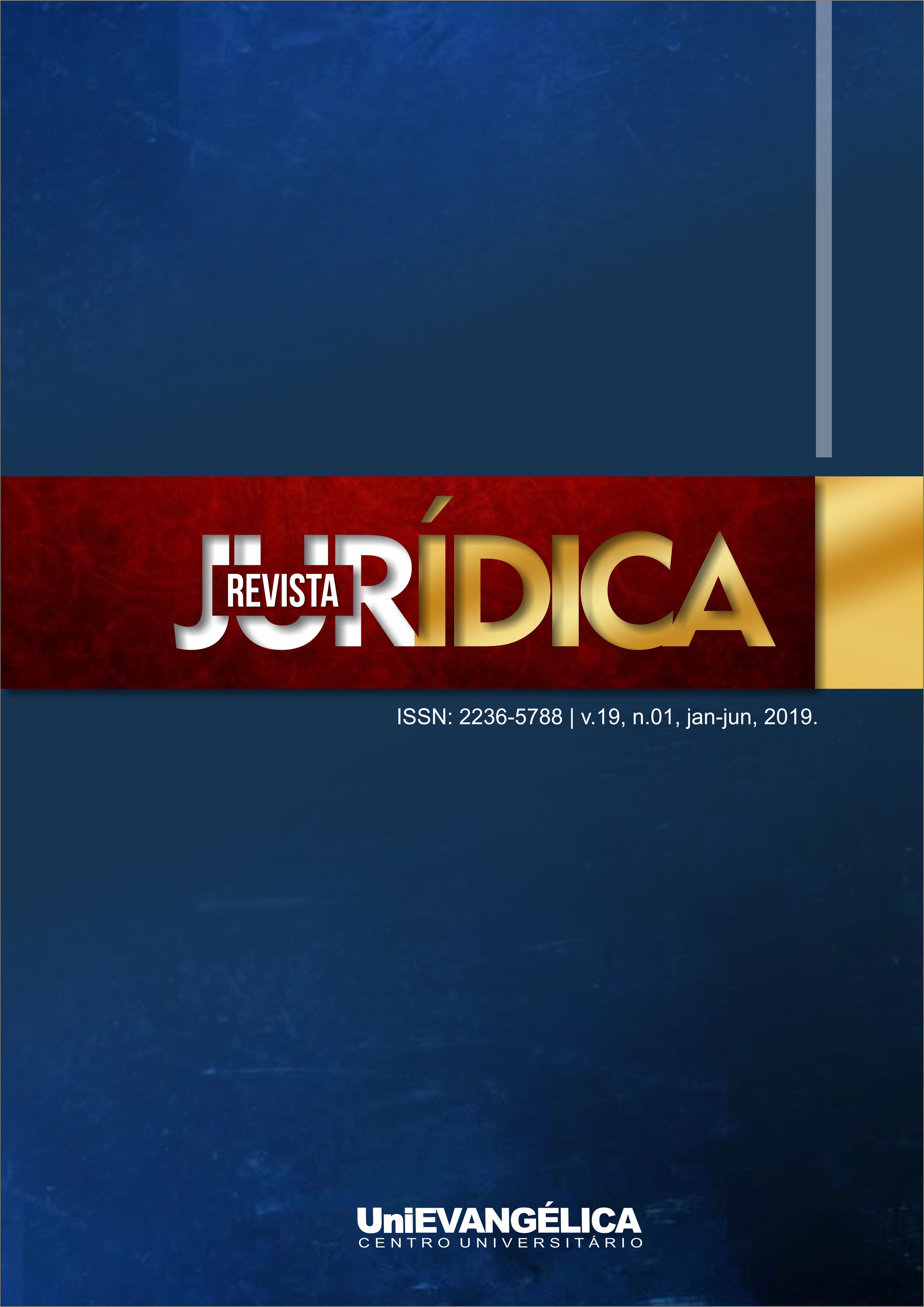Self-mutilation Under The View Of Criminal Law: Crime Or Fundamental Law?
DOI:
https://doi.org/10.29248/2236-5788.2019v19i1.p33-46Keywords:
Self-mutilation, Criminal law, Human dignity, ECA, Harmful conductAbstract
This article highlights the contemporary problem of self - mutilation, seeking to develop a reflection on the protection of protected legal interests, with special emphasis on the essential core of fundamental rights - life -, which must be interpreted extensively, since these fundamental rights seek to guarantee compliance with the most important constitutional precept: the dignity of man, the primary source of attention of the legal order. Considering the legal and theoretical contributions of authors from the area of Psychology, important aspects are revealed regarding the protection of the unimpeachable subject, the child or adolescent, highlighting the role of the jurisdiction in the fulfillment of the Statute of the Child and Adolescent - Law 8069/90 on the Policy of assistance to children and adolescents in order to truly ensure the full realization of children's rights. Throughout the text we seek to draw attention to the complexity of self-mutilating behavior and the need to provide protection standards to the subjects practicing this act, as well as the urgency to criminalize those who in some way encourage self-mutilation in order to curb this practice.
References
ASCENSÃO, J. de O. Direito Civil. Teoria Geral. Introdução. As Pessoas. Os Bens. Volume I. 2ª edição. Editora Coimbra, 2012.
ÁVILA, H. Teoria dos princípios – da definição à aplicação dos princípios jurídicos. São Paulo: Malheiros Editores, 2003.
BIRMAN, J. Dor e sofrimento num mundo sem mediação. Conferência proferida nos Estados Gerais da Psicanálise: II Encontro Mundial, Rio de Janeiro, 2003.
BRASIL. Constituição (1988). Constituição da República Federativa do Brasil. Brasília, DF: Senado Federal: Centro Gráfico, 1988.
BRASIL. Código Civil. Organização de Sílvio de Salvo Venosa. São Paulo: Atlas, 2003.
BRASIL. Código Penal. Decreto-Lei nº 2.848, de 7 de dezembro de 1940. Vade mecum. São Paulo: Saraiva, 2017.
BRASIL. Estatuto da Criança e do Adolescente, Câmera dos Deputados, Lei no 8.069, de 13 de julho de 1990. DOU de 16/07/1990 – ECA. Brasília, DF.
BRASÍLIA, DF. Senado Federal. Projeto de Lei do Senado PLS nº 664, de 2015. Altera o Estatuto da Criança e do Adolescente (ECA) para tipificar o crime de induzimento, instigação ou auxílio à automutilação de criança ou adolescente. Disponível em: <https://legis.senado.leg.br/sdleg-getter/documento?dm=3629383&disposition=inline>. Acesso em: 26 nov. 2011. Texto Original.
COSTA, A. Tatuagens e Marcas Corporais. São Paulo: Casa do Psicólogo, 2010.
COSTA, J. de F. «Em redor da noção de ato médico», in Costa, José de Faria/ Godinho, Inês Fernandes, As Novas Questões em Torno da Vida e da Morte em Direito Penal. Uma perspectiva integrada, Coimbra: Coimbra Editora, 2010.
FAVAZZA, A. Review of treating self-injury: a practical guide. Journal of Nervous and Mental Disease, 2007.
FAVAZZA, A. R. Bodies under Siege: Self-mutilation and Body Modification in Culture and Psychiatry. 3th ed. Baltimore: JHU Press, 1996.
FAVAZZA, A.R. Cultural Understanding of Nonsuicidal Self-Injury. In: Nock,
Matthew K. (Ed.), Understanding nonsuicidal self-injury: Origins, assessment, and treatment. pp. 19-35. Washington DC, US: American Psychological Association, 2009.
FERRAJOLI, L. Direito e razão – teoria do garantismo penal. Trad. Ana Paula Zomer e outros. São Paulo: Madri, Ed. Revista dos Tribunais, 2002.
GAUTHIER, M. Automutilation et autoérotisme. Topique, 2007.
GIUSTI, J.S. Automutilação: características clínicas e comparação com pacientes com transtorno obsessivo-compulsivo. 2013. 184f. Tese (Doutorado em Ciências) – Faculdade de Medicina da Universidade de São Paulo, Universidade de São Paulo, São Paulo, 2013. Disponível em: <www.teses.usp.br/teses/disponiveis/5/5142/tde-03102013-113540/pt br.php>. Acesso em: 14 nov. 2017
GRECO, R. Código Penal Comentado. 4. Ed. São Paulo: Impetus, 2012. GRECO, R. Curso de Direito Penal: parte especial.7. Ed. V. II, Niterói, RJ: Impetus, 2010.
JAFFRÉ, Y. Une épidémie au singulier pluriel réflexions anthropologiques autour des pratiques d’automutilation des adolescents. Corps: revue interdisciplinaire, 2(5), 75-82, 2008.
LAENDER, N. R. A construção do sujeito contemporâneo. Cogito, Salvador , v. 6, p. 81-83, 2004 . Disponível em <http://pepsic.bvsalud.org/scielo.php?script=sci_arttext&pid=S1519-94792004000100019&lng=pt&nrm=iso>. acessos em 26 nov. 2018.
MELLO, S. B. de A. Direito penal: sistemas, códigos e microssistemas. Curitiba: Ed. Juruá, 2004.
Organização Mundial de Saúde (2008) Classifcação Estatística Internacional de Doenças e Problemas Relacionados à Saúde – CID-10. Recuperado de http://bit. ly/2fZ7tji.
SCARAMOZZINO, S. Pour une approche psychiatrique de l’automutilation: implications nosographiques. Champ psychossomatique, 4(36), 25-38, 2004.
SMANIO, G. P. A tutela penal constitucional. Revista Brasileira de Ciências Criminais, São Paulo: Ed. Revista dos Tribunais, ano 10, n. 39, 2002.
STRONG, M. A Bright Red Scream: self-mutilation and the language of pain. London: Penguin Books, 1998.
TELES, N. M. Direito penal: parte geral. V. 4. São Paulo: Atlas, 2004.

